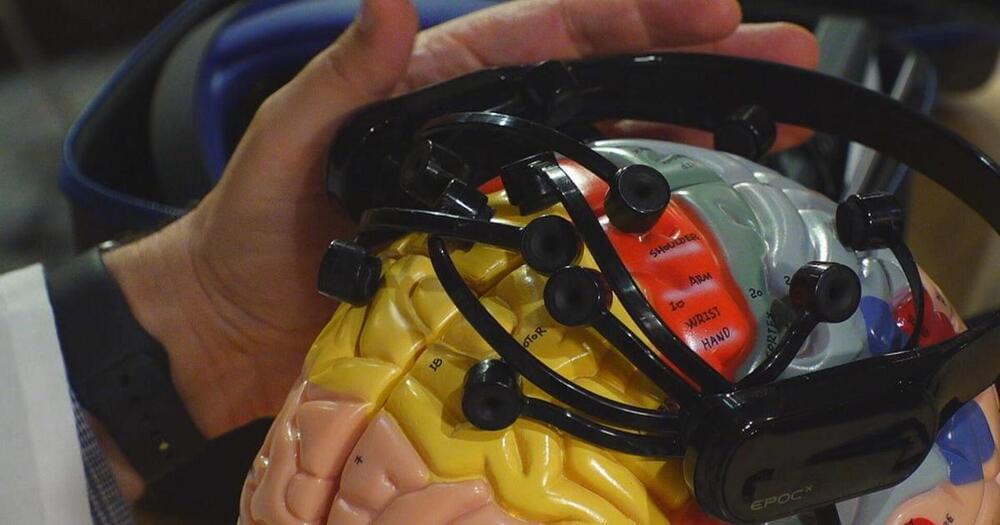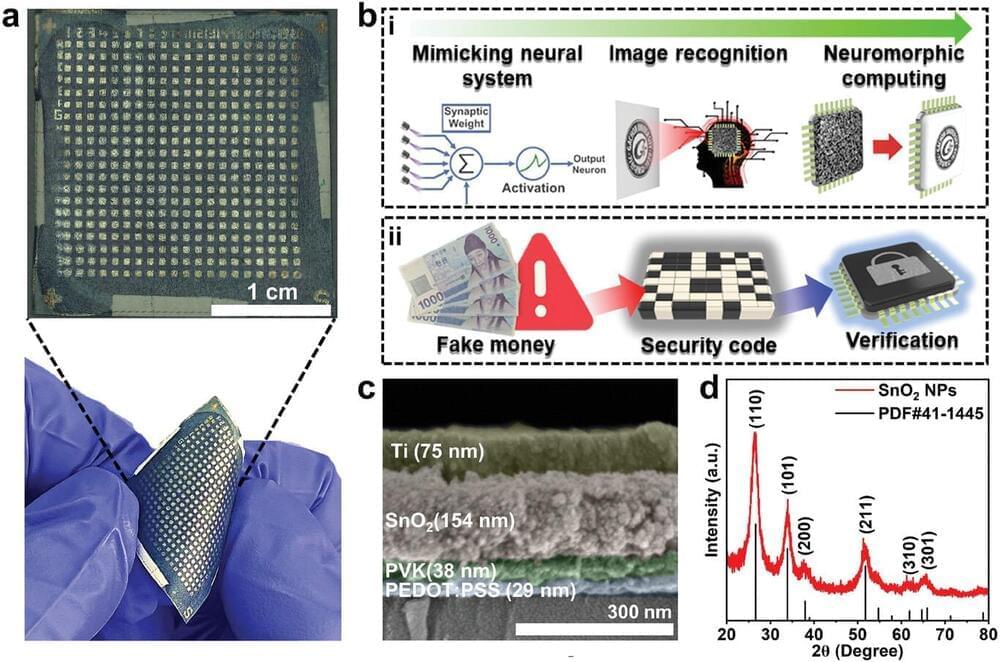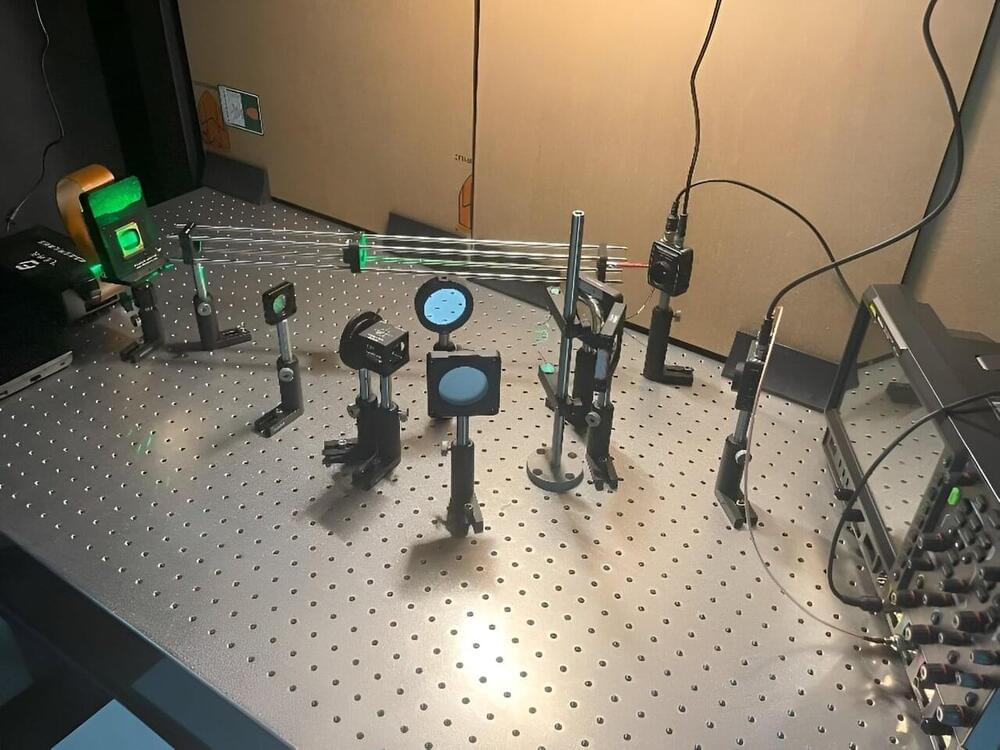By  Julia Robinson 2024–06-24T12:55:00
Julia Robinson 2024–06-24T12:55:00
Researchers are on a quest to outsmart and overcome the sophisticated security system of the brain. Julia Robinson reports on some of the approaches being studied.

By  Julia Robinson 2024–06-24T12:55:00
Julia Robinson 2024–06-24T12:55:00
Researchers are on a quest to outsmart and overcome the sophisticated security system of the brain. Julia Robinson reports on some of the approaches being studied.

JACKSONVILLE, Fla. (June 17, 2024) – Redwire Corporation (NYSE: RDW), a leader in space infrastructure for the next generation space economy, announced today that it has been awarded a contract from the Defense Advanced Research Projects Agency (DARPA) to be the prime mission integrator for the development of a revolutionary air-breathing satellite that will demonstrate the use of novel electric propulsion systems in very low-Earth orbit (VLEO) using Redwire’s SabreSat VLEO platform. The program leverages Redwire’s worldwide leadership in developing and providing VLEO capabilities.
The strategic significance of VLEO is growing – especially for national security missions. While low-Earth (LEO) and geosynchronous (GEO) orbits are becoming increasingly congested and contested, spacecraft in VLEO operate in a relatively unimpaired environment. Bridging the gap between air and space, VLEO spacecraft fly above airborne anti-access areas while operating significantly closer to the area of responsibility on the ground than existing satellites. Additionally, unlike LEO and GEO, debris in VLEO deorbits in hours or days rather than in decades or more.
“We are proud to be leveraging our SabreSat satellite design to support critical VLEO technology advancements for DARPA’s game-changing Otter program,” said Spence Wise, Redwire Senior Vice President, Missions and Platforms. “As VLEO emerges as a critical domain for national security missions, Redwire is continuing to make investments to support technology innovation and strategic operations in this environment.”

But while medical research facilities are subject to privacy laws, private companies — that are amassing large caches of brain data — are not. Based on a study by The Neurorights Foundation, two-thirds of them are already sharing or selling the data with third parties. The vast majority of them also don’t disclose where the data is stored, how long they keep it, who has access to it, and what happens if there’s a security breach…
This is why Pauzauskie, Medical Director of The Neurorights Foundation, led the passage of a first-in-the-nation law in Colorado. It includes biological or brain data in the State Privacy Act, similar to fingerprints if the data is being used to identify people.
“This is a first step, but we still have a long way to go,” he says.


face_with_colon_three year 2021.
The solar aircraft is made by a Spanish-American aerospace startup called Skydweller Aero. Based in Oklahoma City, the company raised $32 million in its Series A funding round, led by Italian aerospace firm Leonardo.
“For us, if you’re flying 90 days with one aircraft, that’s two takeoffs and landings versus … hundreds,” Skydweller Aero co-founder John Parkes told Aviation Today. “Being able to fly thousands of miles, persist over an area for 30–60 days and fly back is a differentiator. It’s a huge cost savings to the US government when you look at the whole cost of doing a lot of the national security missions that we have.”
The plane will stay airborne thanks to 2,900 square feet of photovoltaic cells that will blanket its surface, generating up to 2 kilowatts of electricity. As a backup in case it’s cloudy for a few days in a row, the plane will also be equipped with hydrogen fuel cells (maybe they’re not as “extremely silly” as Elon Musk thinks).

For more than 15 years, a group of scientists in Texas have been hard at work creating smaller and smaller devices to “see” through barriers using medium-frequency electromagnetic waves — and now, they seem closer than ever to cracking the code.
In an interview with Futurism, electrical engineering professor Kenneth O of the University of Texas explained that the tiny new imager chip he made with the help of his research team, which can detect the outlines of items through barriers like cardboard, was the result of repeat advances and breakthroughs in microprocessor technology over the better half of the last two decades.
“This is actually similar technology as what they’re using at the airport for security inspection,” O told us.

Watch June’s edition of Inside SingularityNET, featuring exciting news and insightful updates on our AGI R\&D, decentralized AI platform development, progressive decentralization, and broader ecosystem developments.
00:00 — Intro | AI Twin — Dr. Ben Goertzel.
00:48 — Dr. Matt Iklé | CSO — SingularityNET
04:09 — Sergey Shalyapin | CTO — SingularityNET
08:07 — Vita Potapova | Hyperon Project Manager — SingularityNET
13:19 — Alex Blagirev | SIO — SingularityNET
19:10 — Haley Lowy | Marketing Lead — SingularityNET
24:57 — Jan Horlings | CEO — Deep Funding.
31:23 — Esther Galfalvi | Decentralization Program Lead — SingularityNET
34:11 — Peter Elfrink | Community Lead — SingularityNET
35:52 — Stacey Engle | CEO — Twin Protocol.
39:45 — Jennifer Bourke | Marketing and Community Lead — NuNet.
45:02 — Jerry Hall | Marketing Lead — HyperCycle.
47:21 — Patrik Gudev l CEO — Jam Galaxy.
52:23 — Robin Spottiswoode l CTO — Jam Galaxy.
54:40 — Rebekah Pennington | Partnerships and Community — Yaya Labs.
56:03 — Kennedy Schaal | CEO — Rejuve. BIO
#AI #DecentralizedAI #AGI
MeTTa website: https://metta-lang.dev/
Decentralization website: http://decentralizing.singularitynet.io.
Artificial Superintelligence Alliance: https://superintelligence.io/
Rejuve. Bio Crowdsale: http://bit.ly/rjvbcrowdfund.
Disclaimer: Videos published by SingularityNET are meant for informational purposes only and are not intended to serve as a recommendation to buy or sell any security in a self-directed account and are not an offer or sale of a security. Any investment is not directly managed by SingularityNET or Rejuve. Bio. All investments involve risk, and the past performance of a security or financial product does not guarantee future results or returns. Potential investors should seek professional advice and carefully review all documentation before making any investment decisions.
SingularityNET was founded by Dr. Ben Goertzel with the mission of creating a decentralized, democratic, inclusive, and beneficial Artificial General Intelligence (AGI). An AGI is not dependent on any central entity, is open to anyone, and is not restricted to the narrow goals of a single corporation or even a single country.
